It’s California Native Plant Week and I’m profiling a different California native each day that is on my particular wish list. Today is a favorite, Blue-eyed grass.
“Out of the clover & blue-eyed grass
He turned them into the river-lane;
One after another he let them pass,
Then fastened the meadow-bars again.”Driving Home the Cows
by Kate Putnam Osgood,
b. 1860
Blue-eyed grass or Western blue-eyed grass, Sisyrinchium bellum, is native to California and other areas west of the Sierra Nevada. A perennial meadow wildflower related to the iris family, it hides among the other grasses until the clear blue flowers appear in April or May.
It can be found growing wild on grassy hillsides and in meadows throughout the California foothills, but since the flowers close up on cloudy days, the plant is nearly impossible to find when it is growing alongside other grasses. In the garden, care should be taken to mark where the normally evergreen plant grows if it goes dormant because of cold or drought.
The flowers form at the ends of long branching iris-like stalks about the same height as the leaves giving it the grassy look. Each flower is up to an inch in diameter, with 3 petals and 3 sepals. Each has a dab of yellow at the center and is topped with a delicate yellow style.
It is said that it be propagated by seed, and that it self-sows. It can also be propagated by division of its rhizomes. It would be fun to try all these methods to grow more and more of these little gems.
The two clumps on my south facing slope get excellent drainage and are out of range of any drip irrigation, sheltered under a buddleia. Hardy to at least 20 degrees in winter they go dormant and die back to the ground in my garden. Deer do not bother it.
A cloudy bright day is best for photographing blue-eyed grass in full bloom, mid April.
This year, I noticed that there are two small shoots from the parent and have marked them with sticks so I don’t pull them up when weeding.
There are other Sisyrinchiums I’d like to try, the yellow S. californicum, usually found closer to the coast of California, which likes more moisture may possibly survive here with summer water. In the garden these small treasures should be planted or transplanted to an area where they can be easily seen.

In doing this post, I am somehow reminded of one of my favorite books, California Native Plants for the Garden, by Carol Bornstein, David Fross and Bart O’Brien. It profiles more than 500 best California native plants best for gardening in Mediterranean climates anywhere.

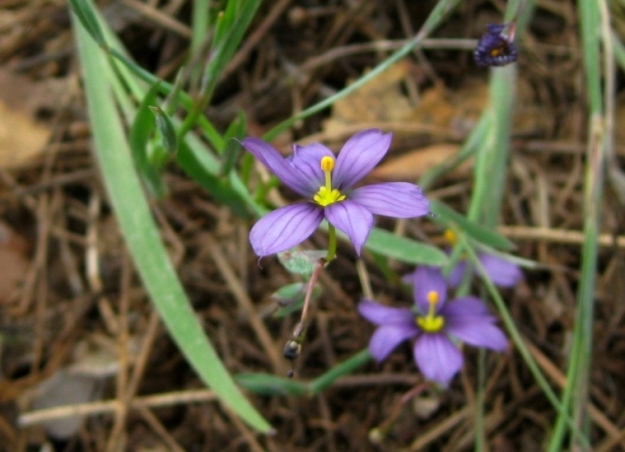
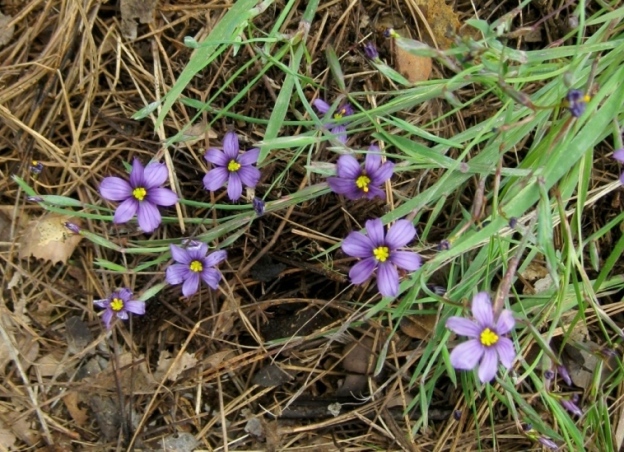
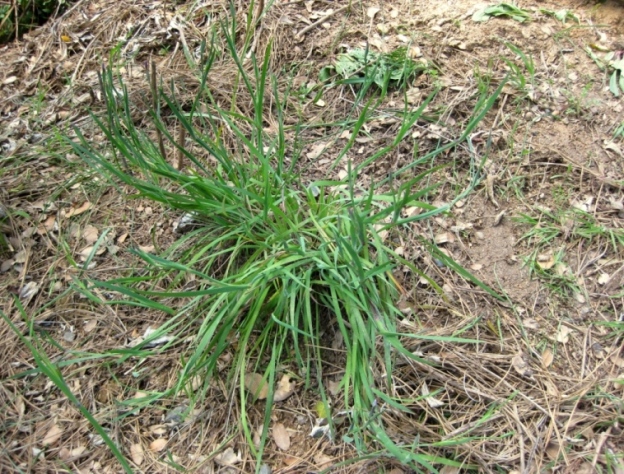
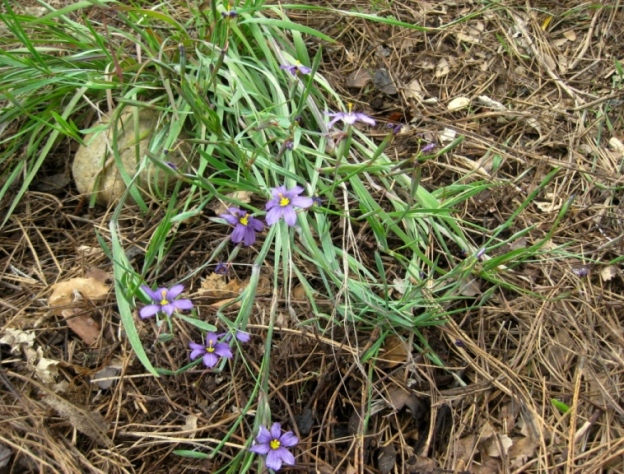

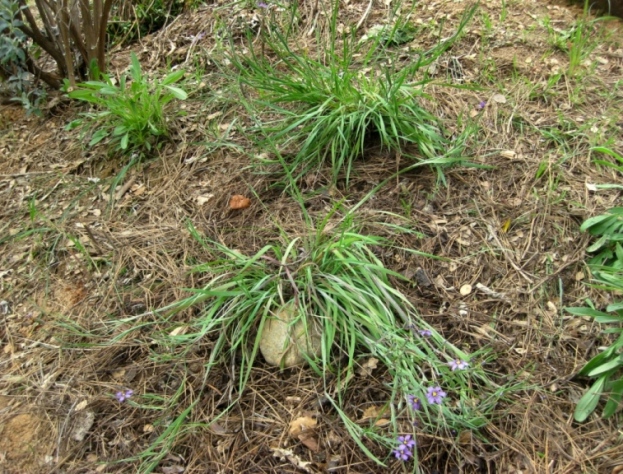
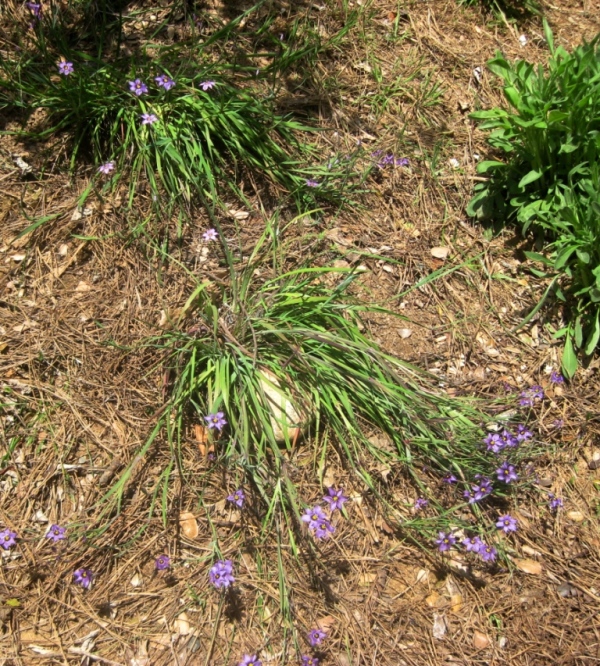
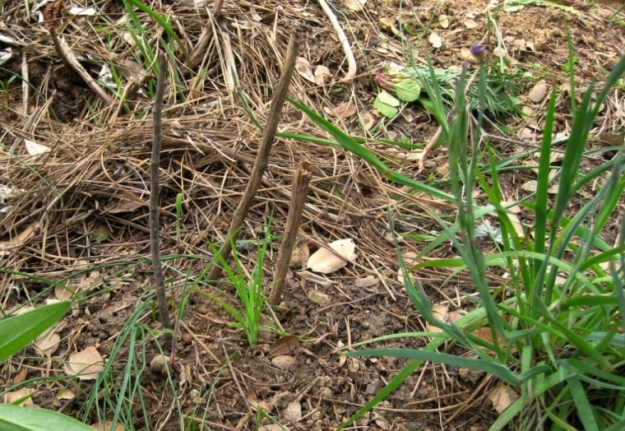
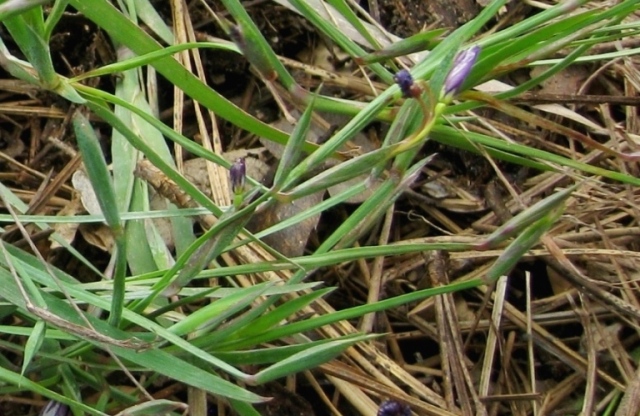
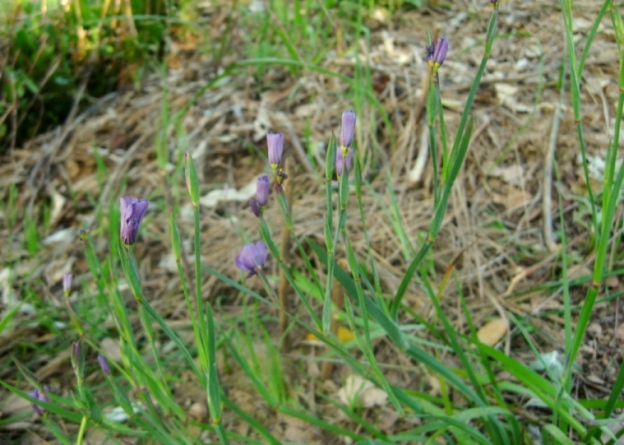
11 comments